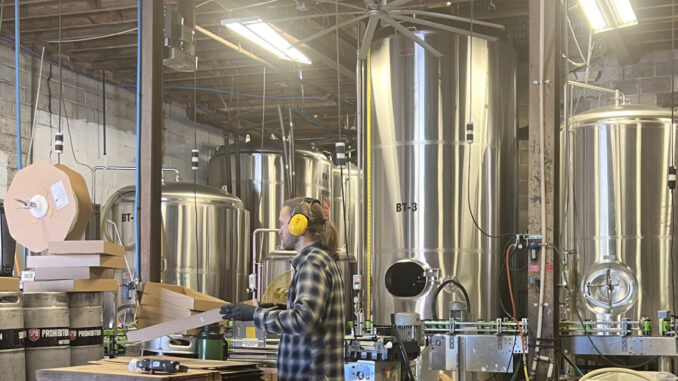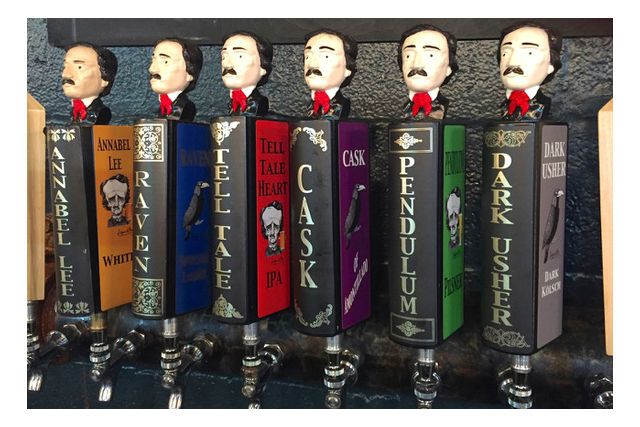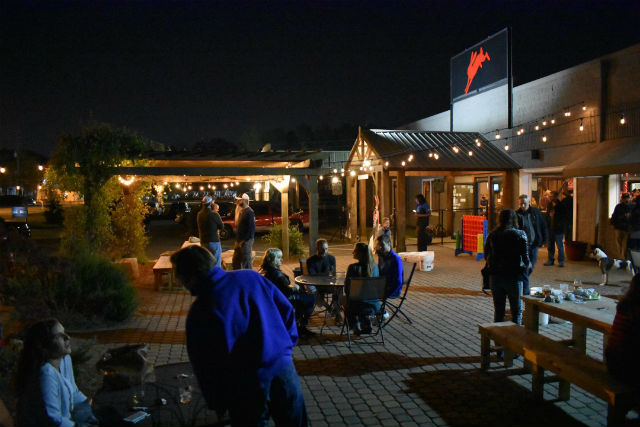
Curiosity can be a powerful driver of innovation. Genetically modified or engineered yeast strains are becoming one of the new frontiers for flavor exploration in brewing. From unlocking tropical fruit aromas once only achievable through heavy hop use to streamlining fermentation efficiency, these lab-assisted tools are less about shortcuts and more about expanding a brewer’s palette. Embracing biotechnology doesn’t diminish craft brewing techniques, some breweries say. Instead, it sharpens it.
By keeping an open mind toward science-driven techniques, many are positioning themselves to meet evolving tastes while pushing the boundaries of what beer can be, showing that the artistry of brewing is as much about adaptation as tradition.
For Bryan Donaldson, Lagunitas Brewing Innovation Manager, delving into new yeasts strains like this was curiosity.
“We were approached by one yeast company (before they were a company) to do some sensory work on a new yeast strain they had developed to mimic some of the flavors of hops,” he told Brewer Mag. “We challenged that company to then push the boundaries of flavor and help us add more ‘colors to our palette.’
“It is all about making delicious flavored beers with any technique possible.”
Southern Prohibition Brewing’s Benjamin Green added that consumers want new, bold, and exciting things, and new yeast strains are an awesome place for them to receive that.
“We (also) get to nerd out on the brewery side,” he pointed out.
Curiosity and efficiency were the main factors for Atlas Brew Works, explained Head of Quality Assurance, Sean Palmateer.
“We always strive to make the most creative and technically sound beer possible, and genetically engineered yeast can be a means to that end,” he said. “When working within the constraints of a specific style, engineered yeast strains can help us hit the targets we’ve established for our brands, or they can open new doors for us creatively.”
As genetically engineered and thiolized yeast strains make their way into more breweries, critics have been quick to raise concerns. Some question whether lab-designed organisms compromise tradition, while others dismiss the technology as a shortcut that undermines artistry. But for the brewers who are using these strains, the criticisms often overlook the science.
“New is scary for some people,” Green said. “But your house yeast isn’t going anywhere. I wonder if people were up in arms about Hefe yeast?”
For Green and many of his peers, engineered yeast strains aren’t replacing tradition; they’re adding to the brewer’s toolkit. And that toolkit is backed by rigorous science.
“Critics can underestimate how much research goes into engineering yeast strains,” Palmateer added. “I get the impression that some people see GMOs as a black box. In reality, modern genetic engineering is easily verifiable and consistent.”
Far from being an unknown, the process is grounded in transparency and precision, allowing brewers to hit targets with confidence.
At Lagunitas, Donaldson points out that many misunderstand just how commonplace genetic modification already is.
“This is well-understood science, and it just allows us to select for exactly what we want, rather than crossing and praying.”
His view reframes biotech not as a leap away from tradition, but as a more exact way of pursuing the outcomes brewers have always sought.
The idea that engineered yeasts are “shortcuts” misses another critical point: they don’t work without craft.
“If you don’t already know how to make a well-balanced IPA, engineered yeast won’t work that out for you,” Palmateer said. “They often require as much knowledge and familiarity as traditional brewers’ yeast to reach the desired product.”
In other words, technology amplifies skill rather than replacing it.
“A poorly represented beer will be a poorly represented beer no matter the ingredients,” Green added. “But some of the sensory from these yeast strains are impossible to mimic without them.”
Lagunitas Brewmaster Jeremy Marshall views it as a sign of progress, having coined a new term to describe consumers who aren’t afraid to try new ideas.
“It’s certainly getting harder to make a bad beer, but is that a bad thing?” he asked. “Craft brewers are just going to use these new fancy tools on top of all the crazy stuff they already do in order to deliver an even more bold and flavorful option to those ‘gastronauts’ who want it.”
For Donaldson, the bigger picture is clear.
“Brewers have been looking for shortcuts for as long as brewing has been happening,” he said. “We select yeast that gives certain outcomes… why not just do it more efficiently?”
He emphasizes that hops and other traditional ingredients remain central, while engineered strains simply open new doors to flavor.
The result is not the loss of craft brewing, but instead it becomes an expansion. Biotechnology doesn’t erase a brewer’s role; it challenges them to use new tools with the same creativity and discipline that have always defined the industry.
Craft brewing has never been about avoiding new techniques as it has always been about intention, creativity, and delivering exceptional flavor, so using lab-assisted tools never look to dilute the essence of craft.
“Craft always meant bold and brave,” Marshall said. “Even the crustiest old-school brewers will grudgingly embrace technology once they see what it can do.”
At Lagunitas, Marshall points to engineered strains that can transform grain compounds into tropical flavors like pineapple, guava, and passionfruit. Far from being shortcuts, these outcomes require thoughtful recipe design and execution, all hallmarks of craft brewing.
“That is my definition of craft, especially when you start adding and adjusting recipes to enhance those aromas,” Green said. “I love brewing Saisons; this (bioengineered strains) just seems like a cousin to that for me.”
READ MORE: Finding Great Uses for Kveik Yeast
For Green, technology is not replacing tradition; it’s expanding a brewer’s creative vocabulary.
Palmateer emphasized that engineered strains have improved both consistency and quality, particularly in Atlas’ Gose program.
“For me, the craft of brewing and fermentation is about the care and attention to detail in making high-quality, interesting beer,” he said. “Anything that helps reach that goal can be part of the craft of brewing.”
Yet even as brewers lean into these tools, transparency remains critical. Palmateer notes that transparency helps address some of that consumer skepticism.
“We’re open about our use of engineered yeast, and I’m always willing to have a conversation about it,” he said. “People should know what goes into their beer.”
Donaldson adds that while the taproom may not call out GMOs on a sticker, staff are always prepared to explain. He also underscores an often-overlooked fact: the yeast itself does not remain in the final product: only the flavor compounds, which are no different from those created by hops or fruit.
“It’s a great marketing and advertising tool,” Green pointed out. “If someone is upset about that, we have plenty of classics made with classic techniques and ingredients.
“I would also remind them that it’s beer, and beer should be fun.”
Looking ahead, brewers see even more possibilities as technology advances.
Marshall envisions artificial intelligence and CRISPR strains could unlock and reshape flavor development.
“Yeast may save the world again and again,” he said.
Palmateer is optimistic too, but realistic about scale and cost: “Custom yeast strains could be on the horizon, but we’re probably a ways away from affordability and accessibility for the majority of breweries.”
That’s a point that could be a benefit to smaller breweries that wouldn’t have a larger scale to look at and instead stay in the lane of barrelage that would be a key to repeatability.
For now, brewers see bioengineered yeast as a natural extension of the craft ethos and another tool to push boundaries, while being able to elevate quality and spark conversations with consumers.
As science continues to open new doors, transparency and education may prove to be just as important as the innovations themselves.







Be the first to comment